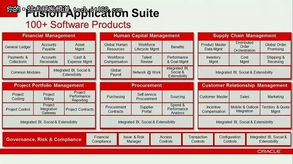The Art of Fishing with Flatfish Bait: A Comprehensive Guide to Techniques for Success
Fishing, an ancient pastime that has captivated anglers for centuries, offers a unique blend of relaxation, patience, and the thrill of the catch. Among the diverse range of fishing techniques and baits, the use of flatfish bait has gained popularity for its effectiveness in attracting a variety of fish species. This article delves into the nuances of using flatfish bait for fishing, providing a comprehensive guide to mastering the art of catching fish with this unique approach.
Understanding Flatfish Bait
Flatfish, such as flounder, sole, and plaice, are known for their flat bodies and are a favorite among anglers due to their taste and high catch rates. The use of flatfish bait involves using these flatfish as live baits or as cut baits, depending on the fishing technique and target species. Here's a closer look at how to utilize flatfish bait effectively.
Choosing the Right Flatfish
The first step in using flatfish bait is selecting the right species. Flounder and sole are popular choices due to their widespread availability and effectiveness. When choosing flatfish, consider the following:
- Size: Larger flatfish are generally more appealing to larger fish, while smaller flatfish are suitable for smaller species.
- Freshness: Fresh flatfish are more attractive to fish, so it's essential to use freshly caught or recently deceased flatfish.
- Condition: Ensure the flatfish is in good condition, with no signs of decay or damage.
Preparation of Flatfish Bait
Once you have selected your flatfish, proper preparation is crucial for successful fishing. Here's how to prepare flatfish bait:
- Gutting and Cleaning: Remove the internal organs and gills of the flatfish. This process is essential for ensuring the bait stays fresh and appealing to fish.
- Debaiting: Cut off the tail and any other parts that may be unappealing to fish. This step also helps to reduce the risk of the bait escaping.
- Wetting the Skin: Gently wet the skin of the flatfish to prevent it from drying out. This can be done by dipping the bait in water or by using a wet cloth.
Techniques for Using Flatfish Bait
Now that your flatfish bait is prepared, it's time to explore the various techniques for using it effectively:
- Bottom Baiting: This technique involves dropping the flatfish bait to the bottom of the water and letting it sit. It's effective for species that feed on the bottom, such as catfish and bass.
- Surface Luring: For species that feed near the surface, like bluegill and sunfish, using flatfish bait on the surface can be highly effective. This technique requires careful timing and a gentle approach to avoid spooking the fish.
- Float Fishing: Using a float to keep the flatfish bait suspended at a specific depth can be advantageous. This method is ideal for targeting fish that feed at particular depths.
- Jigging: Attaching the flatfish bait to a jigging outfit allows you to actively move the bait through the water column, attracting the attention of fish that may be suspended or on the move.
Equipment for Flatfish Bait Fishing
The right equipment is crucial for successful flatfish bait fishing. Here are some essential items:
- Rod and Reel: A medium-heavy action rod with a durable reel is ideal for handling flatfish bait. The reel should have a smooth drag system to prevent the bait from being pulled away.
- Line: Use a strong monofilament line, typically in the range of 12-20 pounds, to ensure you can handle the fight with a flatfish.
- Hooks: Large, sharp hooks are essential for securing the flatfish bait. The size of the hook should match the size of the flatfish being used.
Fishing Spots and Conditions

To maximize your chances of success, it's important to consider the following:
- Fishing Spots: Choose locations where flatfish are known to be present, such as near structures like rocks, docks, or piers.
- Weather Conditions: Fish are more active in stable weather conditions. Overcast days or early morning hours can be particularly productive.
- Tide and Currents: Understanding the local tide and current patterns can help you determine the best times and spots for fishing with flatfish bait.
Conclusion
Fishing with flatfish bait offers a unique and effective way to catch a variety of fish species. By understanding the selection, preparation, and techniques for using flatfish bait, you can enhance your fishing experience and increase your chances of success. Remember, patience and practice are key to mastering the art of fishing with flatfish bait. Happy fishing!












